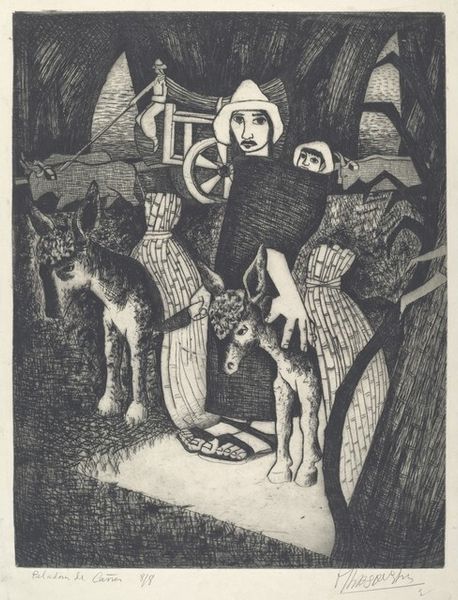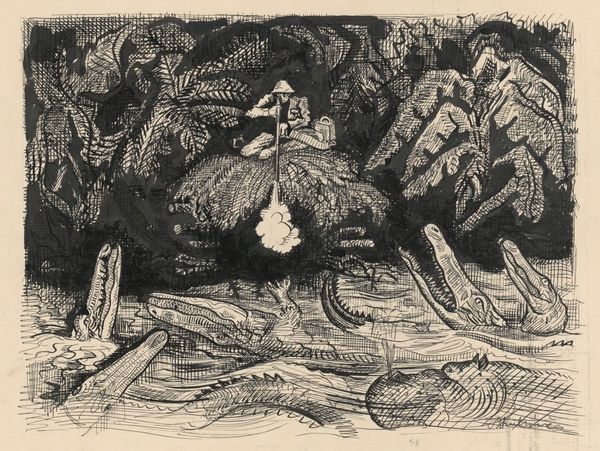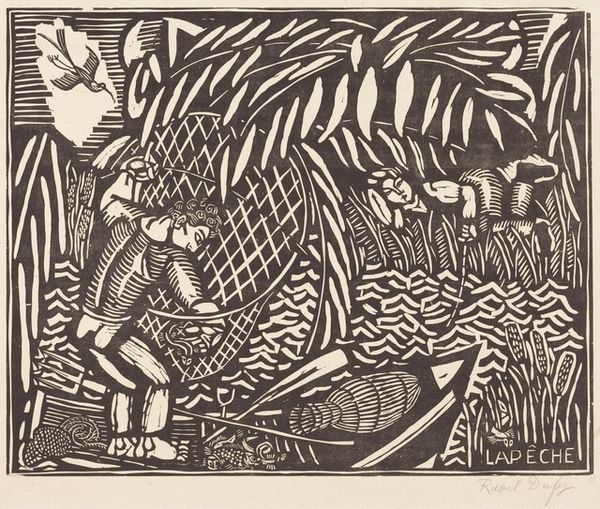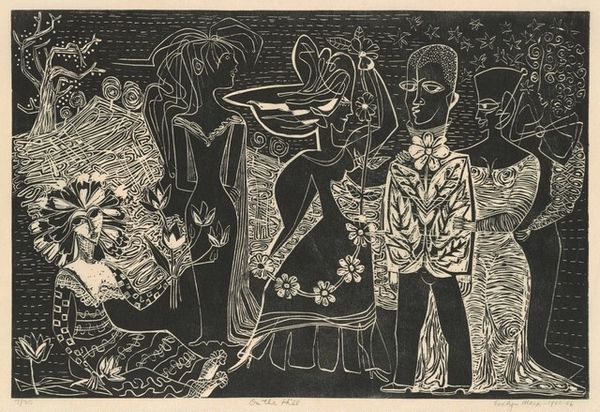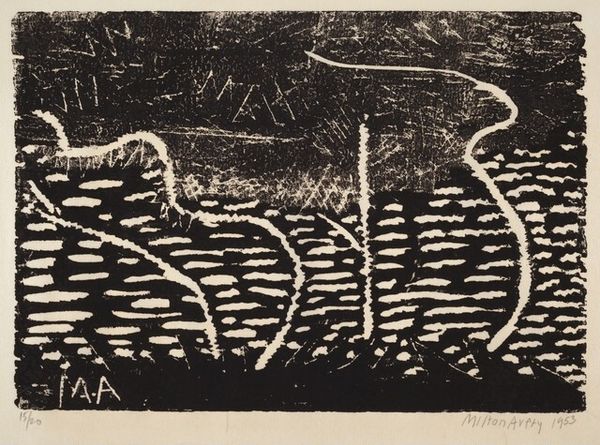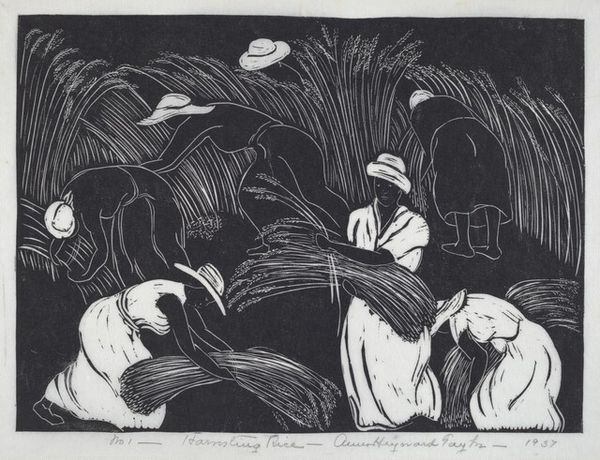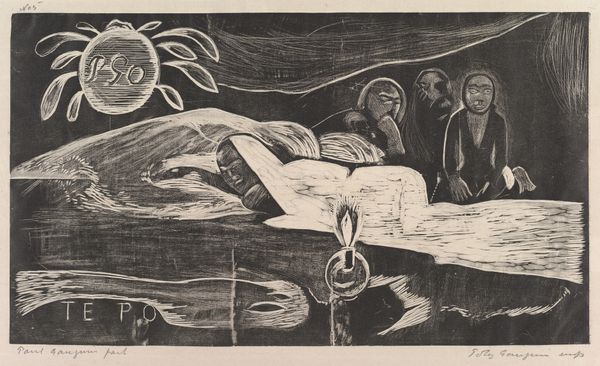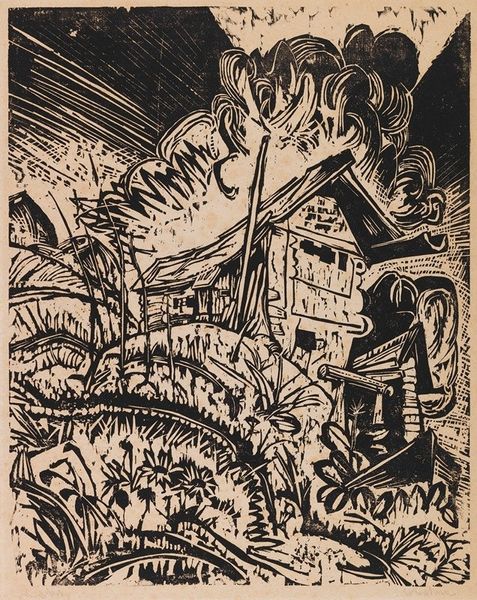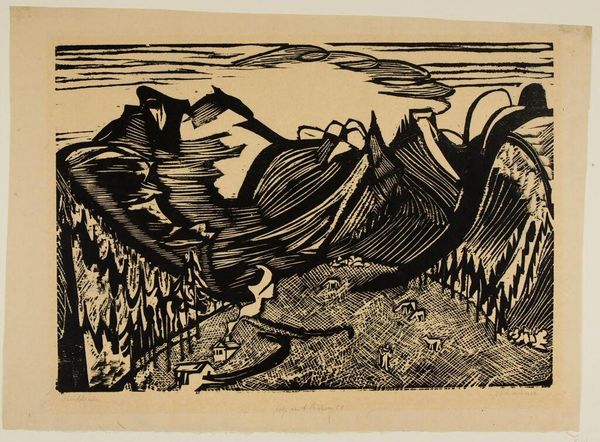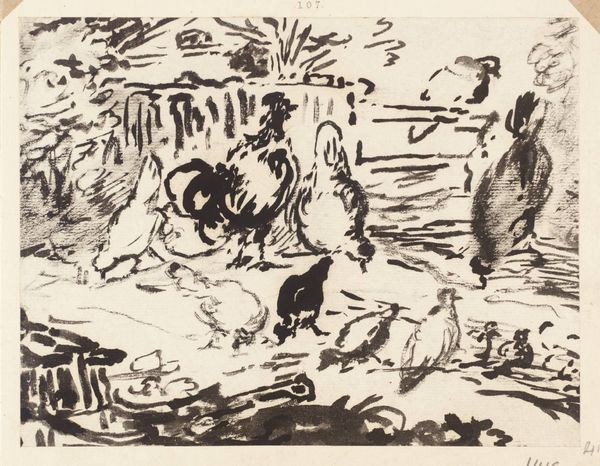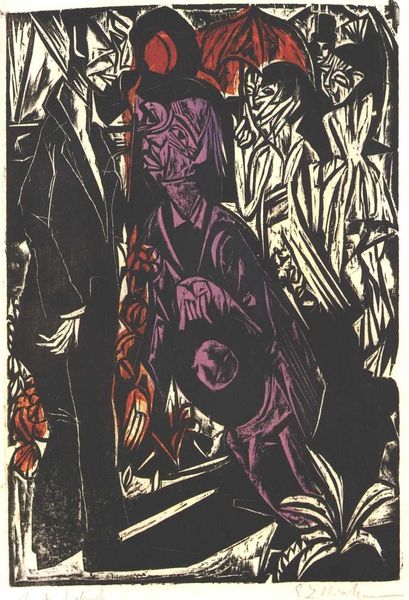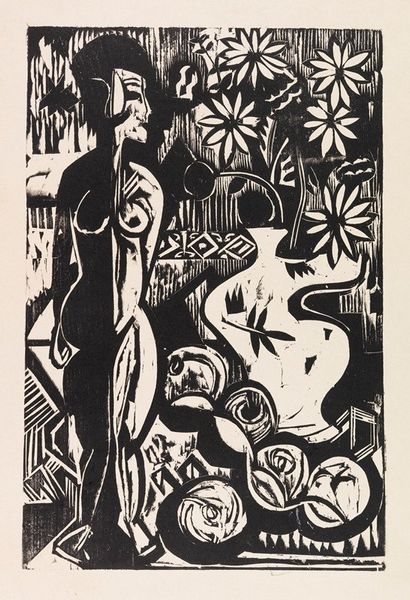
print, woodcut
# print
#
figuration
#
woodcut
#
line
#
genre-painting
#
nude
Copyright: National Gallery of Art: CC0 1.0
Curator: Bernard Reder created this woodcut, titled "Gargantua: Chapter III." What’s your immediate reaction? Editor: Claustrophobia. The composition is so dense. My eyes struggle to find a place to rest. There's almost a frantic energy in the compressed space and busy linework. Curator: Absolutely. The emotional weight of dense patterning mimics mental entrapment. See how Reder uses floral arrangements as both a literal depiction of nature, and perhaps as a symbol of something vital suffocating, cut off from natural growth. Editor: You're right; even the musical figures feel stuck, confined to the corner. Is this supposed to be a specific scene or story? The title "Gargantua" implies a connection to Rabelais. Curator: Good observation. Reder was deeply immersed in literature. "Gargantua," with its bawdy, irreverent humor, likely resonated with Reder’s own sense of rebellion against societal norms. I would argue Reder reimagines a Renaissance narrative using modern Expressionist idioms. The nude could represent the sensuality Rabelais explored, while the crowding hints at the story’s chaotic social critiques. Editor: Interesting. So the busyness could reflect the era’s own anxieties? And how do you interpret the stylistic approach itself? Curator: Woodcut, with its inherent graphic quality, often feels primal. That rawness suits the satirical themes very well. The stark black and white contributes to the overall emotional punch. Also, notice that the linear marks vary and carry different weights and that detail pulls our eyes. Editor: True, and the figures are abstracted, almost grotesque, amplifying that slightly disturbing atmosphere. The lack of perspective adds to the compression. Curator: The cultural memory carried in this woodcut print connects it to historical roots in sociopolitical commentaries but updated to resonate with the artist's contemporary world. A conversation across eras. Editor: I see that connection now. I came to it with some immediate judgments that now, seem superficial. It really speaks to art's ability to convey cultural and historical continuity in complex and challenging ways. Curator: Indeed, art often encourages us to expand our understanding by considering various influences and how one creative object connects to time and culture. Editor: I agree; and to appreciate Reder’s attempt to capture the multifaceted nature of humanity, anxieties, and pleasures.
Comments
No comments
Be the first to comment and join the conversation on the ultimate creative platform.
